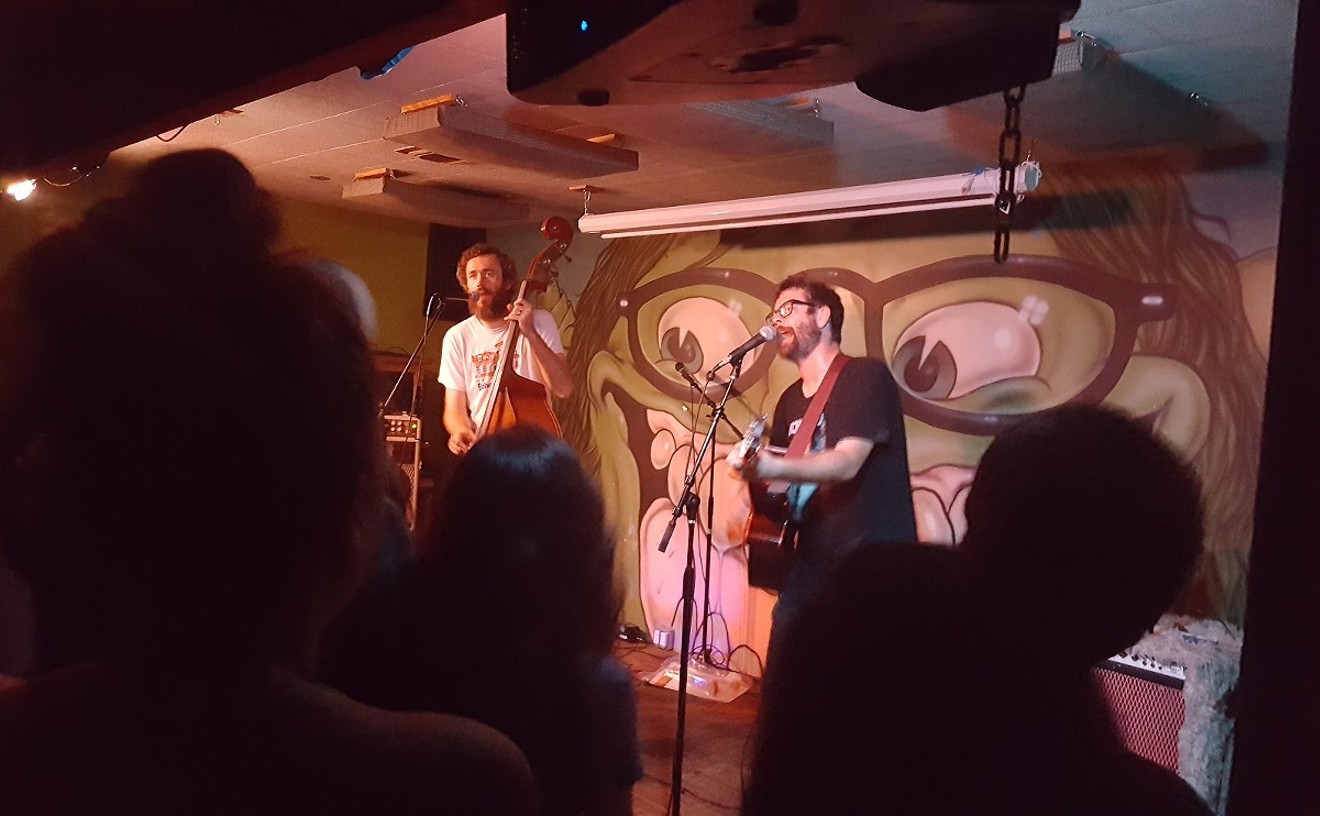"Sites" is hosted by the Arizona State University Art Museum, and involves more than 25 museums, galleries and alternative spaces. Art Lab 16, Barlow & Straker, MARS Artspace, Stop n' Look and Modified are participating downtown Phoenix galleries. Modified's exhibition, like all of those comprising "Sites," examines man's role in the environment.
With home entertainment centers and computers and long commutes monopolizing so much of our time, it's a healthy diversion to observe how contemporary artists perceive our role in the evolving environment -- and derive inspiration from it. "Sites" provides a refreshing opportunity to do just that.
Three artists distinct in media and directive are represented in Modified's offering for "Sites": Ian van Coller, Matthew J. Plausible and Toshi Ueshina are Arizona artists whose works were selected for their eclectic observations of man's interaction with his habitat.
Inside Modified, a 50-pound pile of grass seed sets the tone for the exhibition. In this conceptual piece, Plausible illustrates the absurdity of the attempt to green an arid climate. Stylistically, van Coller's contributions to the Modified exhibit resemble the mixed-media assemblages from his one-man show "Ian van Coller: The Nature of Displacement" at the Scottsdale Museum of Contemporary Art's New Directions Gallery last summer.
Van Coller's work explores the impact of the European colonization on the culture and environment of Africa. Born and raised under apartheid in South Africa, van Coller moved to the United States in 1991 to attend ASU.
Haunted by a sense of displacement, van Coller says he began "to consider the political nature of landscape, and how the way in which people use and identify with the land can lead to insights into racial issues and the historical effects of colonialism."
Van Coller's work has an organic feel and contains elements of African tribal art. The hanging assemblages are strongly influenced by "memory boards" used in Zambia to relate the history of the tribe.
Large, wooden panels, covered in mud and wire, are suspended from the gallery ceiling. These pieces contain images printed on mirrors that illustrate the tribal life and habitats juxtaposed with elements of technological progress.
In Great White Hunter III, 2000, van Coller uses the mosquito as an effective metaphor for the exploitation of Africans by colonialists. Appropriated text from an old biology book documents the life stages and transformation of the mosquito. The images are printed onto a transparent, varnished silk tissue designed to represent human skin. Hanging from the bottom of the piece are large seedpods that resemble mosquito larvae.
Head Gear II employs mining equipment and windmills to represent the plundering of the earth to gain material wealth. Printed on a floral-patterned, yellowed tissue, Head Gear II contrasts the organic and the industrial.
Van Coller's work revolves around the South African experience, but its message knows no boundaries. His work is housed in the permanent collections of The Fogg Museum at Harvard, the Philadelphia Art Museum, and the New York Public Library, among other prestigious international collections.
Toshi Ueshina, a photographer of Japanese descent, effectively documents the destruction of the desert landscape for urban expansion, and with it, society's disconnection with nature. His photographs compel the viewer to question how manmade constructions change natural settings. Baffled by the American urge to build on mountaintops, Ueshina portrays this phenomenon in an untitled photograph of an apartment complex built on the top of a hill in north Phoenix.
A black-and-white Ueshina photo of the rooftop of the Monument Valley visitor center aligns the air-conditioning units on the roof with a rocky spire on the horizon. While the natural tower will undoubtedly outlive the manmade air-conditioning units, the photograph reminds the viewer that the human hand can taint even the grandest of natural marvels.
Simple and stark, Ueshina's photographs reflect the perpetual quest to develop the desert. Plausible's theoretical installations are derived from his belief in the existence of a series of simulated realities that blur the lines between the real and the unreal. He cites Jean Baudrillard, a founding father of postmodern social science, as a major influence. Baudrillard postulated that "it is no longer a question of a false representation of reality, but of concealing the fact that the real is no longer real, thus saving the reality principle." Many Baudrillard critics contend that his theories are not highly original but extensions of turn-of-the-century Dadaism. Inverted Referentials, an installation of four glass jars, contains Polaroids of cityscapes and a Texaco station, submerged in water. The labeled jars contain different pH levels.
Plausible hearkens to space with Intra/Extra, a mixed-media installation consisting of five small glass bottles of "lunar samples" placed on parallel metal shelves. An audio recording from Sputnik resonates in the background. The lunar samples are actually desert rocks, meant to convey the artist's belief that society creates its own realities.
While Plausible's installations are well-constructed, they reek of the pretentious intellectualism found in Anglo-American conceptual art of the 1970s and 1980s, particularly the mound of grass seed.
Modified's contribution to the "Sites Around the City" exhibition runs through Wednesday, April 5. The gallery, 407 East Roosevelt Street, is open from 7:30 p.m. to midnight. Call 602-252-7664 or visit http://www.modified.org










